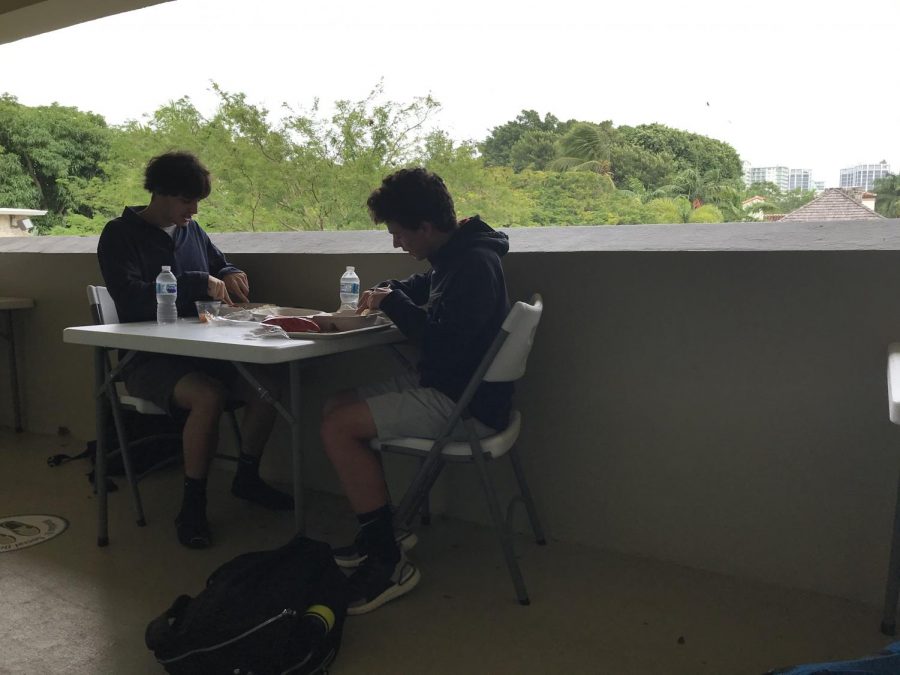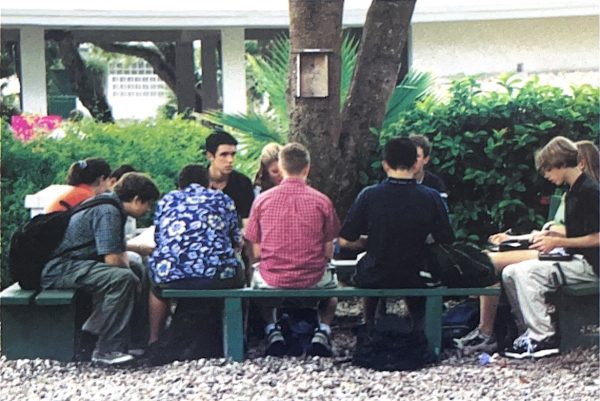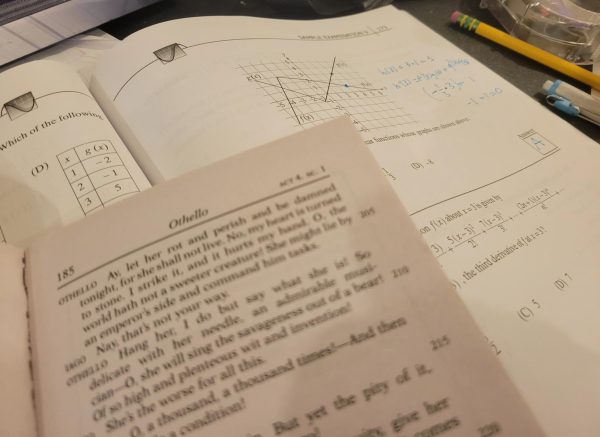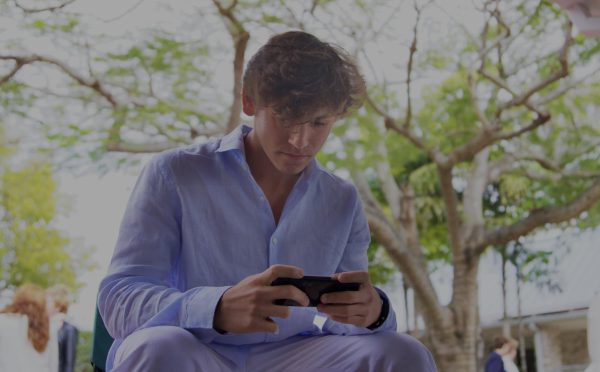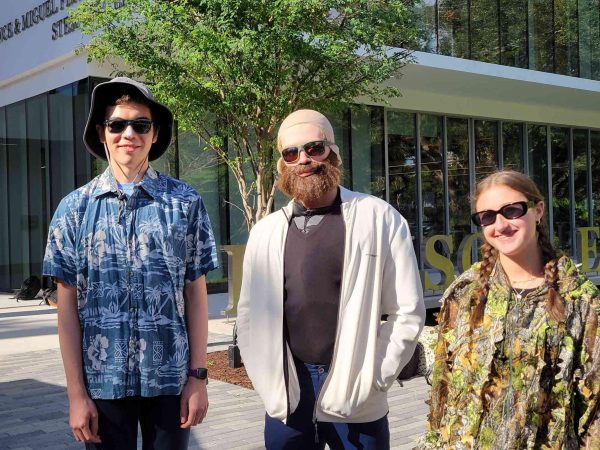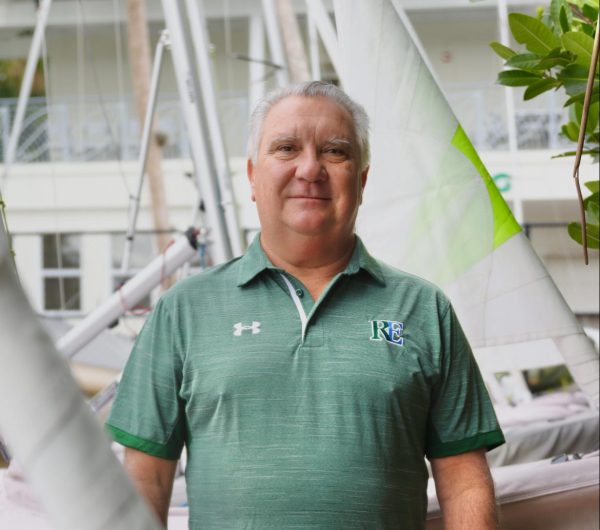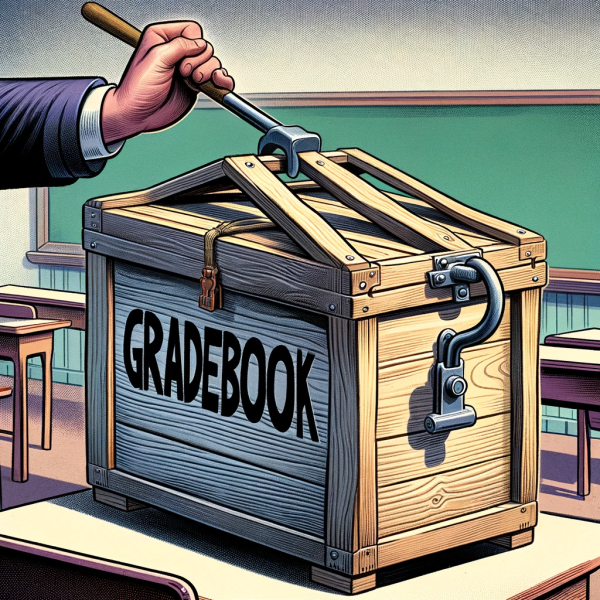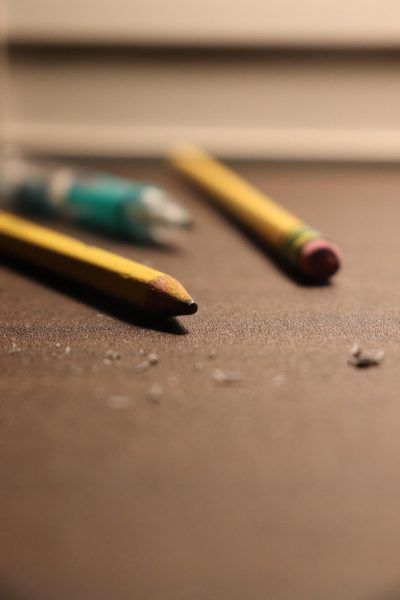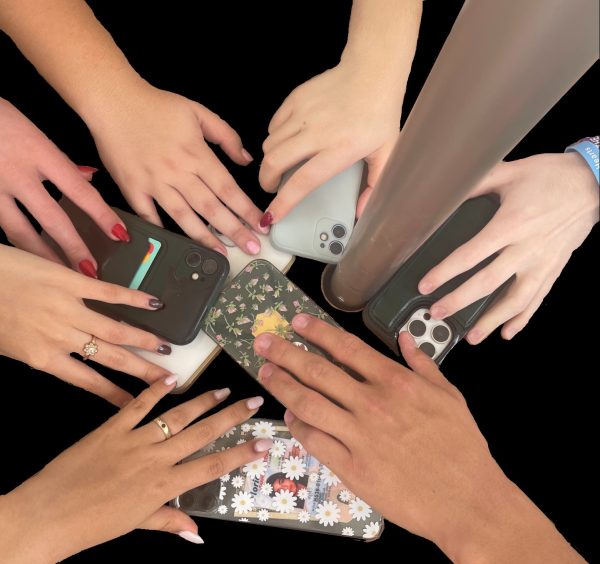The price of safety: students feel drawbacks of new school lunch system
Socially-distanced seniors eating lunch outside
This year, the school lunch system is different. To compensate for social distancing and COVID-19, Ransom Everglades has implemented a new lunch-line system, assigned advisory eating spaces, a shorter lunchtime, and a new way to distribute the food.
The changes were necessary. Assigned advisory seating ensures that there are not large groups of people sitting near each other. Also, all the seating areas are outside, decreasing the likelihood of COVID-19 transmission. It takes very little time to choose and grab what you want to eat, making it easier to avoid clumps of people. Instead of people crowding and pushing their way through the lunch line, they can now just grab a container and leave. Furthermore, different grades have different lunchtimes to increase social distancing. Juniors and Sophomores eat from 11:00 am to 11:30 am, and Seniors and Freshman eat from 12:00 pm to 12:30 pm.
But RE students have also felt some of the drawbacks of the new lunch system since campus REopened. In previous years, lunch wasn’t just lunch; it was also a time to talk with friends you may not have seen all day, study, finish homework, or even meet with teachers. With scheduled advisory and lunch time, students have less autonomy over how they use their lunch time.
“The social life which has already been impacted by not being able to see your friends at school will only become worse. You can’t eat with your friends, and you can only have lunch for thirty minutes, which greatly cuts down on social time, “said Frank McPhillips ‘21.
“I get along with my fellow advisees, so it is not much of a problem,” said Logan Smith ’22, who eats lunch with his advisory on the Senior Deck. But Smith raised another potential issue that students have been thinking about since the switch to the new lunch system: food waste. Pre-packaged lunches seem to have made Ransom Everglades’ food and trash waste go up significantly.
“If I don’t like it, I eat a little but don’t finish it,” said Smith. Like many RE students, he has both noticed and contributed to trash cans that seem overflowing with half-eaten or barely touched lunches.
Mr. Alfredo Silva, the head chef at RE, noted that the cafeteria staff has been making a successful effort not to waste food internally.
“I do the menus, I do all the math, how much food we are supposed to make every day. There is very little leftover. And I can do a lot of things with leftover food. Remember, you can serve food twice, especially the protein. But look, it has been good. Not much food has been thrown out, to be honest,” said Mr. Silva.
“The good thing is that what we are throwing out is sustainable. They are going to go away quick. When it hits the ground, it disappears, it will take only a few days, and there will be nothing there,” he added.
While food is being saved inside the cafeteria, however, the opposite is happening among students, in part because they find themselves debating whether to grab a whole packaged meal just for one part of it.
Mr. Silva assures the student body that they are working on a solution. “That is something that we have been trying to adjust. This is a learning progress what we are doing, and I hear a lot of feedback. One of the biggest pieces of feedback was about French fries, because that is one of the biggest things for the kids. We are trying to work in a system, especially on that day with the fries, to have them separate. To have the sandwich and fries by themselves.”
The switch to multiple packages for certain foods could make a difference in the amount of food waste RE students generate. But it will also require mindfulness on the part of students themselves.


